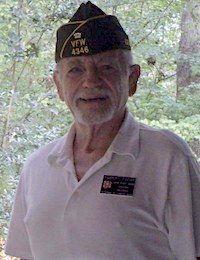Gainesville advanced to the finals for the first time in ten years with a win Friday over Roswell, 35-28. Prince Avenue Christian stayed alive in the playoffs as well, defeating St. Francis, 24-20.
It was a rough weekend for Oconee fans as both Oconee County and North Oconee lost their semifinal matchups. Here’s a recap:
Class 7A
Carrollton 35, Colquitt County 27: Carrollton drove 99 yards for a 7-0 lead after stopping Colquitt County three times and the 1-yard line. Then down 17-14 with 29 seconds left in the first half, Carrollton drove 65 yards on four quick plays, with Bryce Hicks going over from the 1-yard line as the half ended. Carrollton never trailed again. Hicks rushed for 205 yards on 37 carries and threw a 9-yard TD pass to Jordan White for a 28-17 lead with eight minutes left in the third quarter. Freshman Julian Lewis was 17-of-26 passing for 248 yards and two touchdowns. Caleb Odom had six receptions for 117 yards. His 42-yard reception from Lewis set up Hicks’ pivotal score before halftime.
What it means: Carrollton, in its first season in the highest classification, is in its first state final since 2013 and can win its first championship since 1998. Joey King, who led Cartersville to state titles in 2015 and 2016, became one of fewer than 40 coaches all-time to lead two schools to state finals and can join a list of fewer than 20 to win titles at two. Colquitt County, under first-year coach Sean Calhoun, who was Carrollton’s coach for five seasons, went 13-1, its best finish since 2018.
Mill Creek 48, Milton 14: Mill Creek scored touchdowns on its first five possessions After Milton got within 35-7 in the second quarter, Mill Creek’s Miles Gindlesperger returned an onside kick 50 yards for a touchdown. Hayden Clark was 7-of-8 passing for 143 yards and two touchdowns. Makhail Wood had five receptions for 153 yards and three touchdowns. Cam Robinson rushed for 100 yards on 15 carries.
What it means: Mill Creek avenged a 2021 quarterfinal loss and reached its first state final in its 19th season. Milton finished 10-4 under first-year coach Ben Reaves. The game, which started at 5 p.m. at neutral Lakewood Stadium in Atlanta, drew a sparse crowd and sparked debate about the GHSA’s Class 7A minimum seating requirement of 6,000. Milton did not meet the minimum, and Mill Creek declined to waive the rule, prompting the move to a venue more than 30 miles from either school.
Class 6A
Gainesville 35, Roswell 28: Gainesville’s Baxter Wright completed his first 15 passes and finished with 208 yards and four touchdowns, and Darius Cannon scored on a 94-yard kickoff return and a 23-yard reception. Roswell had a first-and-goal from the 3-yard line in the final two minutes but failed to score after Ja’Quez Sims’ second-down sack. Roswell had another scoreless drive into the red zone earlier in the quarter.
What it means: Gainesville, coming off a 5-5 finish in Class 7A, is in the finals for the first time since its 2012 Class 5A championship team led by Deshaun Watson and is in position for its first undefeated season since 1925. Josh Niblett became the only new coach to take a team to the finals this season, and Gainesville became the only finalist that didn’t make the playoffs in 2021. Roswell finished 12-2 and was stopped short of its first finals appearance since 2016.
Hughes 42, Rome 3: Prentiss “Air” Noland was 21-of-24 passing for 242 yards and three touchdowns, two to Jediyah Willoughby. D’Marcus Brown had three sacks. Hughes intercepted three passes, and Xavier Leonard returned one for a touchdown. Hughes led 14-0 in the first quarter and put the game away with three scores in the fourth.
What it means: Hughes, the 2021 runner-up and the preseason No. 1 team, improved to 14-0 and returned to the finals in search of its first championship. Rome finished 12-2, stopped short of its first finals appearance since its 2017 Class 5A championship.
Class 5A
Ware County 31, Dutchtown 7: Warner Robins scored touchdowns on its first three possessions and led 24-0 midway in the second quarter. R.J. Boyd rushed for career-high 144 yards on 16 carries, and Nikaeo Smith was 12-of-17 passing for 149 yards and two touchdowns. Jarvis Hayes had eight receptions for 110 yards.
What it means: Ware County, which opened in 1958, is in the finals for the first time since 2012 in pursuit of its first championship. Jason Strickland, who led Fitzgerald to championship games in 2015 and 2016, is now one of fewer than 40 coaches all-time to lead two schools to state finals. Dutchtown finished 12-2 with its first semifinal appearance in history under first-year coach Niketa Battle.
Warner Robins 35, Cartersville 10: Malcolm Brown rushed for 190 yards and a touchdown on 20 carries, and Isiah Canion was 16-of-25 passing for 140 yards. Warner Robins held Cartersville to 29 yards rushing and led in total yards 402-270. Daniel Barber kicked field goals of 47, 34 and 23 yards.
What it means: Warner Robins won its 14th consecutive playoff game, remained in contention for its third straight title and became the third school in history, joining Buford and Eagle’s Landing Christian, to reach six straight finals. Cartersville finished 12-2, beaten in the playoffs by Warner Robins the past three seasons.
Class 4A
Benedictine 42, Troup 21: Luke Kromenhoek was 9-of-15 passing for 215 yards and three touchdowns. Za’Quan Bryan had five receptions for 76 yards. RaSean Matthews had two receptions for 71 yards and a touchdown and scored on a 30-yard run. Benedictine led 35-0 at halftime and surrendered two fourth-quarter touchdowns with its reserves in the game.
What it means: Defending champion Benedictine, overcoming a 2-2 start, is in the finals for the fourth time in nine seasons and seeking its fourth title in that span. Troup, denied its first championship game appearance, finished 12-2.
Cedartown 28, North Oconee 20: Harlem Diamond had 108 yards from scrimmage (56 rushing, 52 receiving) and scored three touchdowns, one a 10-yard run that gave Cedartown a 28-13 lead early in the fourth quarter. North Oconee’s final drive was stopped at the 37-yard line. Cedartown was held to a season-low 231 total yards but limited North Oconee to 136 yards and forced two turnovers to none of its own. Carlos Jones recovered a fumble and returned an interception 61 yards for a touchdown and a 14-6 lead in the second quarter.
What it means: Top-ranked Cedartown won the only No. 1-vs.-No. 2 semifinal and reached the finals for the first time since 2001 in pursuit of its first championship since 1963. North Oconee finished 13-1 and fell in the semifinals for the second straight season.
Class 3A
Cedar Grove 23, Oconee County 0: Cedar Grove held Oconee County to 121 total yards, none passing, and posted its second straight shutout. Quinterio Lawson pressured Oconee County into a safety, and Adonijah Green blocked a punt that set up a 3-yard scoring drive. The Saints iced the game with a 14-play, 99-yard drive that ended with Demarcus Smith’s 5-yard TD run with 1:16 left in the third quarter for a 23-0 lead. Elliott Colson was limited to 12-of-20 passing for 89 yards, but Cedar Grove rushed for 218 yards.
What it means: Cedar Grove, the defending champion, earned its second consecutive shutout and stayed on track for its fifth title in seven seasons and got a rematch with region rival Sandy Creek, which the Saints beat 49-34 on Oct. 21. Oconee County failed to win a fourth straight playoff road game and finished 9-5 under first-year coach Ben Hall.
Sandy Creek 49, Carver (Atlanta) 14: Sandy Creek took a 35-8 lead into halftime after trailing 8-0. Geimere Latimer was 16-of-33 passing for 304 yards and four touchdowns. Cameron Watts had eight receptions for a career-high 170 yards and three touchdowns, and Kaleb Cost had six catches for 93 yards and one touchdown. Cost also scored on two short runs and intercepted a pass.
What it means: Sandy Creek, beating Carver for the second time this season, is in the finals for the first time since its 2012 Class 4A championship team. Carver, the 2021 runner-up, finished 9-4.
Class 2A
Fitzgerald 19, Fellowship Christian 9: Fitzgerald scored a safety on St. Francis’ first play from scrimmage, led 19-0 at halftime, forced three turnovers, and allowed only 124 total yards and nine first downs. St. Francis didn’t score until late in the third quarter. Fitzgerald went up 9-0 on a 12-play, 63-yard drive late in the first quarter, recovered a fumble on the ensuing kickoff and scored on an eight-play, 43-yard drive to go up 16-0. Ty Solomon rushed for a team-leading 83 yards on nine carries.
What it means: Fitzgerald, the defending champion, won its 20th consecutive game. Fellowship Christian, the last of six former Class A Private schools in the 2A playoffs, finished 10-4 and fell in the semifinals for the third time in four seasons. The previous two were in Class A.
Thomson 20, Appling County 14: Jontavis Curry rushed for 171 yards on 15 carries and caught a 19-yard TD pass. His 77-yard TD run with seven minutes left gave his team its final 20-14 margin. Appling County drove to Thomson’s 16-yard line in the final two minutes but was denied.
What it means: Thomson avenged its 2021 Class 3A quarterfinal loss to Appling County and reached the finals for the first time since 2016 in pursuit of its first title since 2002. Appling County, never a finalist, lost in the semifinals for the second straight season and finished 11-2.
Class A Division I
Swainsboro 22, Irwin County 21: Landen Scott kicked 32-yard field goal on the game’s final play. It was the first successful field goal of his career. His lone previous attempt, taken earlier in the game, was blocked. He’s also missed an extra point. Demello Jones scored Swainsboro’s three touchdowns and ran for 169 of his team’s 331 rushing yards. Ty Adams rushed for 97 yards. Swainsboro won despite going 0-for-7 passing.
What it means: Swainsboro coach Scott Roberts defeated his alma mater to put the Tigers in their first final since their 2000 Class 3A championship team. Swainsboro (13-0) is one victory from its first undefeated season since 1940. Irwin finished 11-2, its streak of five state finals ended.
Prince Avenue Christian 24, St. Francis 20: Keon Rogers scored three touchdowns, his third on a 12-yard run in the third quarter for a 21-14 lead. Prince Avenue ran out the final 5:33 of the game after St. Francis got within 24-20. Rogers rushed for 84 yards and two touchdowns, caught two passes for 81 yards and a touchdown and intercepted a pass. Aaron Philo was 14-of-25 passing for 210 yards. Ethan Christian, beaten on a post pattern in the third quarter, made a touchdown-saving play near the goal line, chasing down the receiver, wrestling the ball away and returning it to the 35 to preserve a seven-point lead.
What it means: Prince Avenue, the preseason No. 1 team, is in the finals for the third straight season and can win its second title. St. Francis, playing its first semifinal, finished 10-4 after a 5-6 finish in 2021.
Class A Division II
Bowdon 45, Lincoln County 28: It was a back-and-forth game until midway in the third quarter, when Bowdon scored two touchdowns four minutes apart – a 43-yard run by T.J. Harvison and a 52-yard run by Robert McNeal – to take a 38-21 lead. Harvison rushed for 203 yards and three touchdowns on 23 carries. McNeal rushed for 144 and two touchdowns on eight carries and was 5-of-11 passing for 111 yards and a touchdown. The two accounted for 467 of Bowdon’s 470 total yards.
What it means: Bowdon (13-1) is in the finals for the first time since 2001 in pursuit of its first championship since 1992. Lincoln County finished 10-3 after its first semifinal run since 2012.
Schley County 35, Johnson County 6: Jay Kanazawa was 17-of-23 passing for 338 yards and three touchdowns, and Jalewis Solomon had 10 receptions for 224 yards and two touchdowns and intercepted a pass. Malachi Banks rushed for 72 yards and caught a 37-yard TD pass. Schley County led 14-0 in the first quarter and was never in danger from there.
What it means: Schley County, which opened in 2000, reached its first championship game. Johnson County, which had been the division’s only unbeaten team, finished 13-1 after making the semifinals for the first time since 2005. Johnson County’s Germivy Tucker ran for 218 yards and took the state lead in rushing yards with 2,916, the fifth-highest single-season total in state history.
GIAA CHAMPIONSHIPS
Three teams extend state-title streaks. John Milledge Academy and Thomas Jefferson Academy won their fourth consecutive state titles, Central Fellowship Christian won its third straight, and St. Anne-Pacelli won the first in school history at the GIAA championships Thursday and Friday at Mercer’s Five Star Stadium.
Here’s a recap of the championship games in each classification:
Class 4A
St. Anne-Pacelli 10, Stratford Academy 0: St. Anne-Pacelli of Columbus defeated Stratford Academy of Macon for the second time this season to earn the first football championship for a program that began in 1960. Both teams moved from the GHSA this season. The Vikings (12-1) took advantage of a dropped punt snap for the game’s only touchdown, taking over inside the 10-yard line and eventually scoring on an 18-yard pass from Cam Ellis to Cooper Trombley with 2:09 remaining in the third quarter. They added a field goal early in the fourth quarter for the final margin. Ellis was 9-of-10 passing for 106 yards and rushed for 89 yards. Stratford Academy (9-4), in its first season under Chance Jones, was seeking its first championship since 2004.
Class 3A
John Milledge Academy 49, Deerfield-Windsor 0: John Milledge Academy of Milledgeville completed its fourth consecutive unbeaten season and extended its winning streak to a state-record 50 games with a shutout of Deerfield-Windsor, which moved back to the GIAA this season after spending the past two years in the GHSA. Briggs Eady scored two rushing touchdowns and threw for one to Baylen Zielinski, who also ran for a score. John Milledge (13-0) led 21-0 at halftime and finished with a 485-44 advantage in total offense (unofficially). Head coach J.T. Wall, a former Georgia and NFL fullback, is 138-14 in 12 seasons at his alma mater. Deerfield-Windsor of Albany last won a state championship in 2012.
Class 2A
Central Fellowship Christian 46, Brentwood 7: Central Fellowship of Macon finished off a 13-0 season in which only one game, a 33-29 victory over Tiftarea Academy on Sept. 2, was decided by fewer than 10 points. Quarterback Jeb Walls passed for 243 yards and four touchdowns and ran for 106 yards and two scores. Jaylun Goodrum had three receiving touchdowns and one rushing touchdown. The Lancers were state champions the past two seasons in the Georgia Association of Private and Parochial Schools. Brentwood of Sandersville was the 2A champion in 2021.
Class A
Thomas Jefferson Academy 38: Robert Toombs Academy 8: Beans Hunt rushed for 161 yards and three touchdowns on 13 carries and ran in three two-point conversions to lead Thomas Jefferson of Louisville to the ninth championship in school history and to avenge a regular-season loss against Robert Toombs. The Jaguars (10-2) had 313 yards rushing on 49 carries and attempted just two passes, completing one that went for a 10-yard touchdown from Cam Beasley to Carson Peavy. John Durden added 62 yards and a touchdown rushing. Robert Toombs of Lyons was seeking its first title since 2013.
____________
Produced by Georgia High School Football Daily. To join the GHSF mailing list, click here.



















